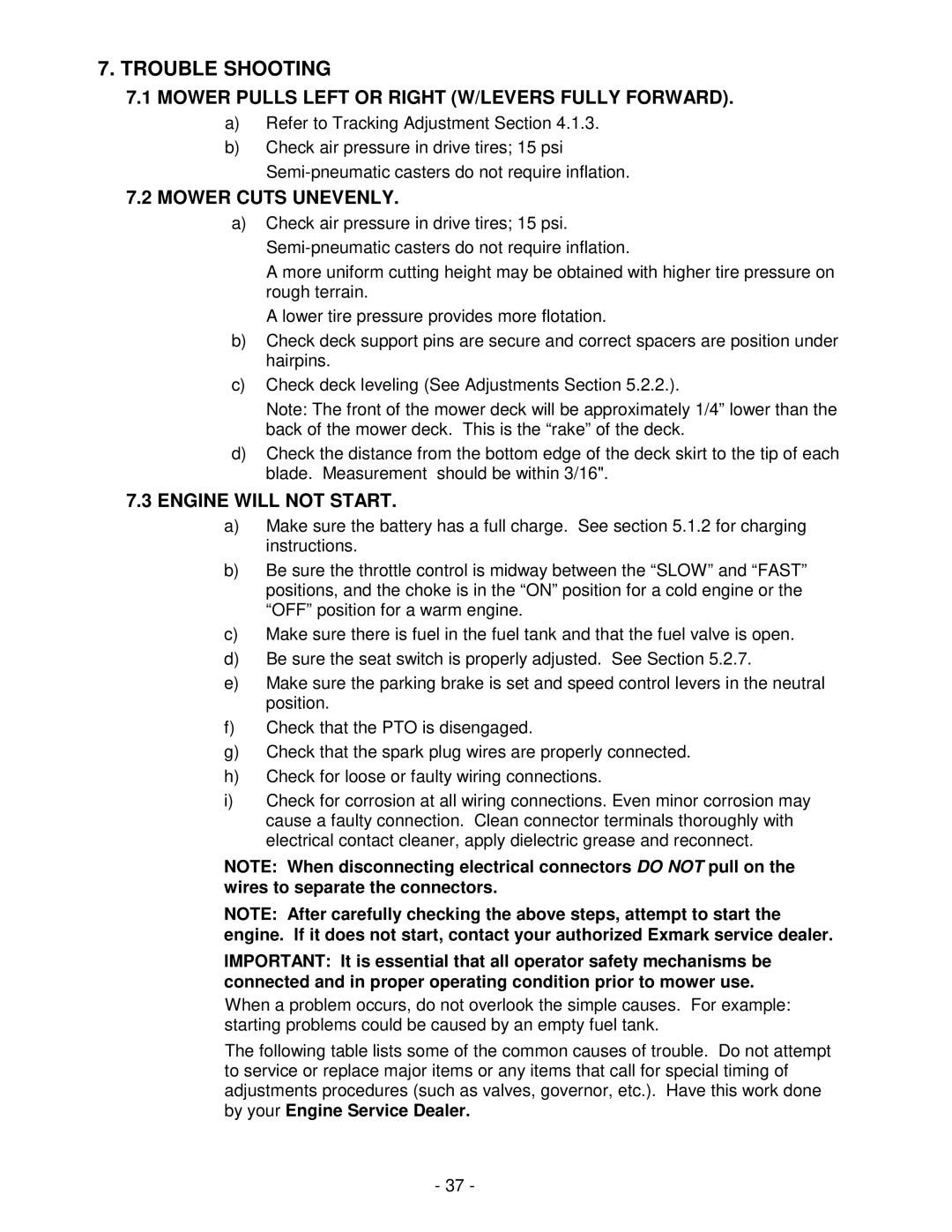7.TROUBLE SHOOTING
7.1MOWER PULLS LEFT OR RIGHT (W/LEVERS FULLY FORWARD).
a)Refer to Tracking Adjustment Section 4.1.3.
b)Check air pressure in drive tires; 15 psi
7.2MOWER CUTS UNEVENLY.
a)Check air pressure in drive tires; 15 psi.
A more uniform cutting height may be obtained with higher tire pressure on rough terrain.
A lower tire pressure provides more flotation.
b)Check deck support pins are secure and correct spacers are position under hairpins.
c)Check deck leveling (See Adjustments Section 5.2.2.).
Note: The front of the mower deck will be approximately 1/4” lower than the back of the mower deck. This is the “rake” of the deck.
d)Check the distance from the bottom edge of the deck skirt to the tip of each blade. Measurement should be within 3/16".
7.3ENGINE WILL NOT START.
a)Make sure the battery has a full charge. See section 5.1.2 for charging instructions.
b)Be sure the throttle control is midway between the “SLOW” and “FAST” positions, and the choke is in the “ON” position for a cold engine or the “OFF” position for a warm engine.
c)Make sure there is fuel in the fuel tank and that the fuel valve is open.
d)Be sure the seat switch is properly adjusted. See Section 5.2.7.
e)Make sure the parking brake is set and speed control levers in the neutral position.
f)Check that the PTO is disengaged.
g)Check that the spark plug wires are properly connected.
h)Check for loose or faulty wiring connections.
i)Check for corrosion at all wiring connections. Even minor corrosion may cause a faulty connection. Clean connector terminals thoroughly with electrical contact cleaner, apply dielectric grease and reconnect.
NOTE: When disconnecting electrical connectors DO NOT pull on the wires to separate the connectors.
NOTE: After carefully checking the above steps, attempt to start the engine. If it does not start, contact your authorized Exmark service dealer.
IMPORTANT: It is essential that all operator safety mechanisms be connected and in proper operating condition prior to mower use.
When a problem occurs, do not overlook the simple causes. For example: starting problems could be caused by an empty fuel tank.
The following table lists some of the common causes of trouble. Do not attempt to service or replace major items or any items that call for special timing of adjustments procedures (such as valves, governor, etc.). Have this work done by your Engine Service Dealer.
- 37 -
